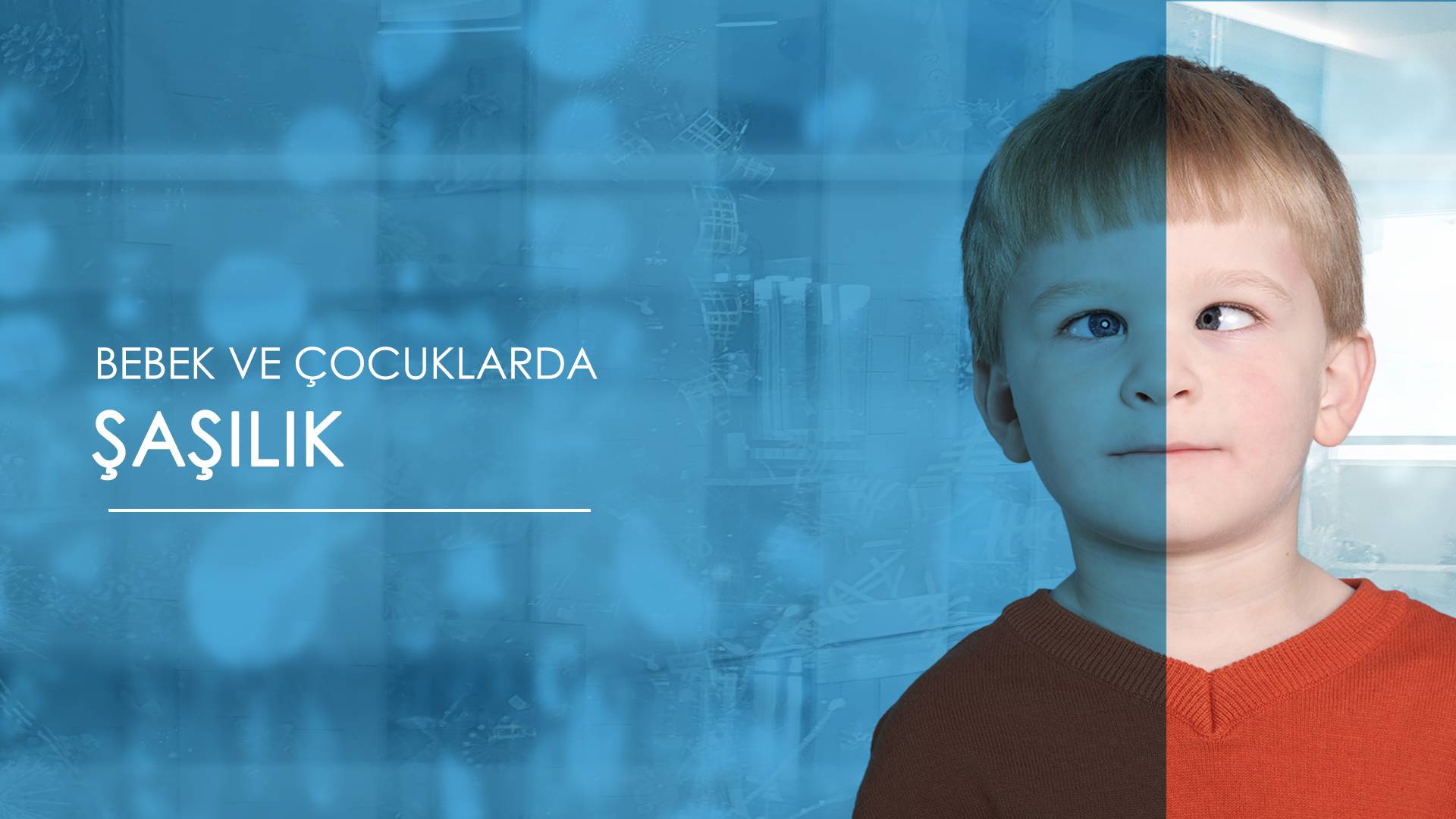Strabismus in Babies and Children
Strabismus; It is one of the most common eye problems in babies and children. Strabismus is a visual defect in which the parallelism of the eyes to each other is disrupted and the eyes look in different directions. Although it is usually congenital, strabismus may also occur in later years as a result of trauma due to a fall or impact. The main reason is the lack or excess of strength in one or more of the 12 muscles that enable each eyeball to move. In this case, one of the eyes looks straight while the other can look in, out, up or down. In some cases of strabismus, deviation may occur in both eyes.
Strabismus is also one of the eye problems where early diagnosis and treatment yield extremely successful results. Treatment with glasses is possible, especially up to the age of 6. Since the child will start school after this age, if strabismus is not noticed and the treatment process is not started, it will affect school success and the treatment process will be even more difficult.
If early diagnosis and treatment of strabismus is not carried out, children will suffer from visual impairments as well as aesthetic disorders for a lifetime. deficiency may also occur. For this reason, routine eye examination is extremely important and necessary in babies and children, even if there are no complaints.
Causes of Strabismus
There is no single cause of strabismus. Problems experienced during pregnancy, complications during birth, problems experienced during the child's development or illnesses may cause strabismus. In strabismus seen after the age of 2, the cause is usually refractive error. Refractive eye defects can also cause strabismus.
One of the most important things to know about strabismus is that it also has a genetic aspect. If there is strabismus in the family, it is possible that it will be seen in children.
Apart from these, falls or traumas in children may also be the cause of strabismus. If the child has any predisposition, strabismus may occur after a surgery or an accident. In diseases such as hypertension and diabetes, paralysis of the nerves leading to the eye can occur, and in this case, strabismus may occur.
Symptoms of Strabismus
- Dissynchronization of the eyes
- Headache
- Imbalance after walking
- Blurred vision
- Double vision
- Watering eyes
- Head or face turned to one side
- Loss of three-dimensional images
Pseudostrabismus can also be seen frequently, especially in infancy. This misconception, caused by the width of the nasal root, disappears as the baby grows. A specialist doctor in eye examination has the opportunity to distinguish false strabismus.
Treatment of Strabismus
The treatment of strabismus is decided according to many variables such as age group and type of strabismus. However, the earlier the diagnosis and treatment are made, the easier the treatment can be achieved. In most cases, it is possible to treat strabismus with glasses, especially up to the age of 6.
In cases where glasses do not work, surgical treatment is used. The purpose of surgical treatment is; It is to increase or decrease the functions of the muscles that enable the eye to move. Thus, strabismus can be eliminated.
